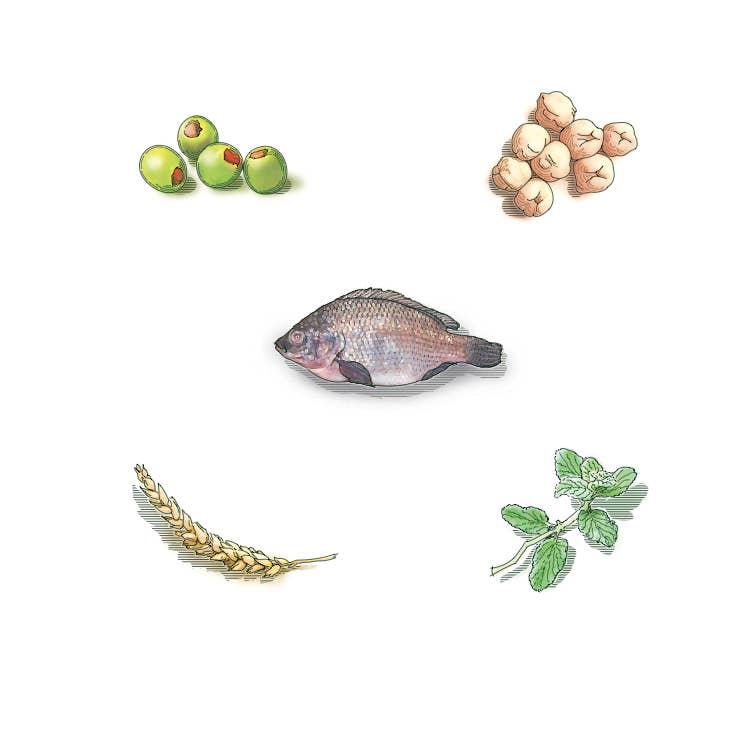
Original Galilee
Thanks to modern irrigation systems and other agricultural technologies, Israel's Galilee is a farming powerhouse that today yields everything from kiwis to avocados. But the region's culinary character has roots in ancient traditions that are still practiced here. According to Abbie Rosner, author of Breaking Bread in Galilee (Hilayon Press, 2012), before the formation of Israel in 1948, the Arabs, Bedouins, and Druze (an ancient religious sect) who make up nearly half the area's population "farmed pretty much exactly the way it was described in the Bible." In other words, they tended indigenous foods such as chickpeas, wheat, and olives grown from heirloom seeds. These native crops, referred to as baladi ("my land" in Arabic), are sometimes grown without irrigation, resulting in stronger, truer flavors. They form the bedrock of the Galilean pantry. For centuries, these subsistence farmers pressed olives into oil; ground chickpeas to make hummus; and transformed whole wheat into nutty flour, bulgur (cracked wheat, a main ingredient in tabbouleh), and freekeh, toasted green wheat. The prevalence of foods such as labaneh, a tangy, yogurt-like cheese, can be ascribed to the local Bedouin tribes, who, as herders, contributed dairy to the regional diet. Plus, the Jordan River on the eastern border, the inland Sea of Galilee, and the Mediterranean at the west have all supported centuries of fishing, still evident in the Arab—Israeli port city of Akko, where you'll find local species such as tilapia. And foraging in the wild is equally important for Druze, Arabs, and Bedouins: Countless greens such as wild asparagus and mallow serve as the bases for stews, savory pies, and other dishes, while za'atar, wild thyme, is dried and mixed with sumac (a powder made from tart red berries) and a variety of spices to make a type of seasoning that's consumed all over the Middle East.
Keep Reading
Continue to Next Story










